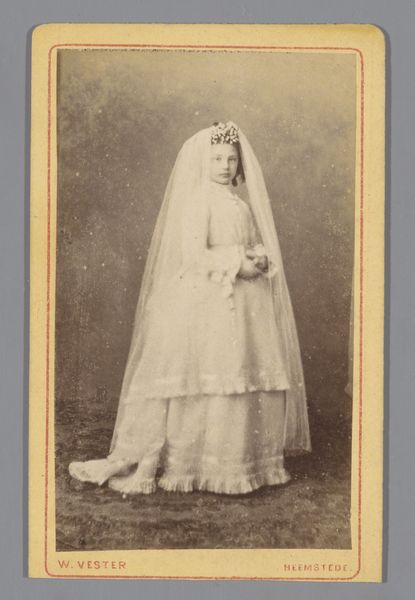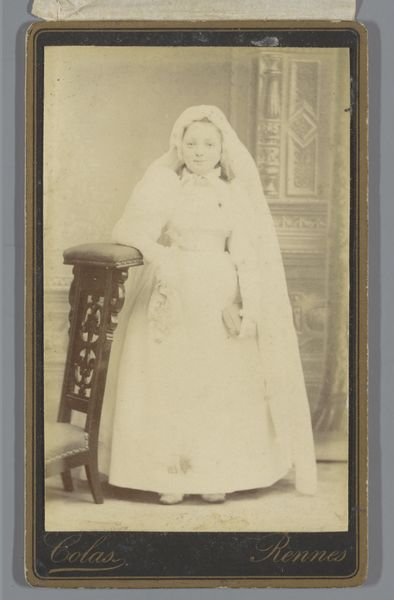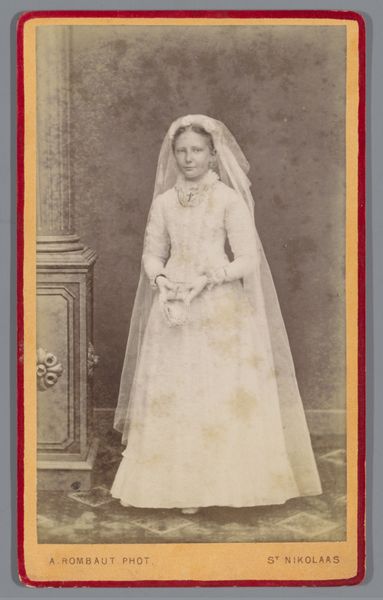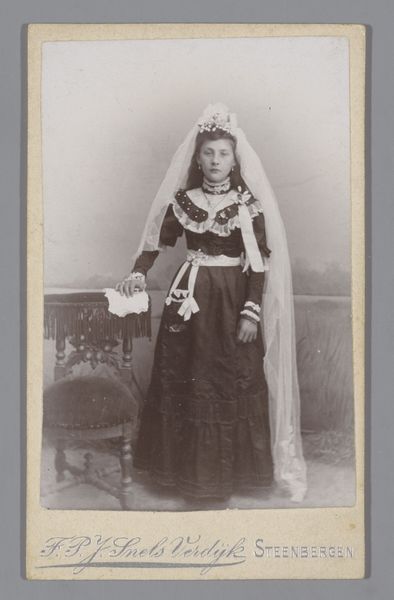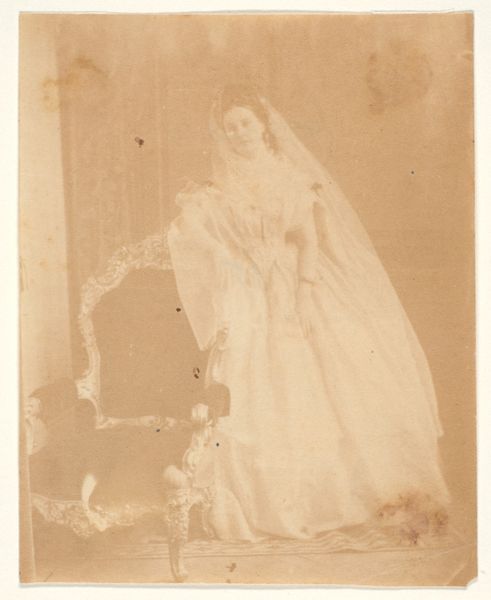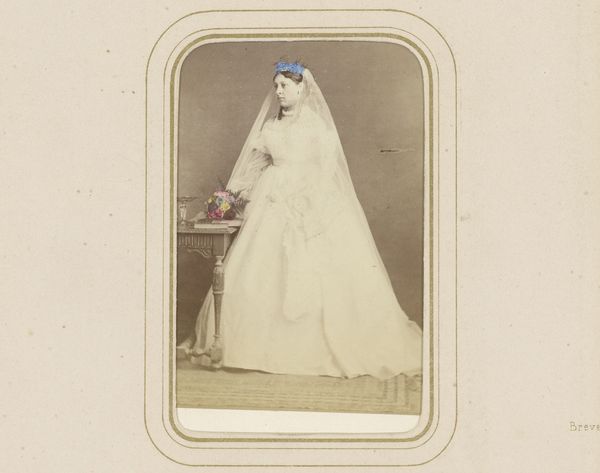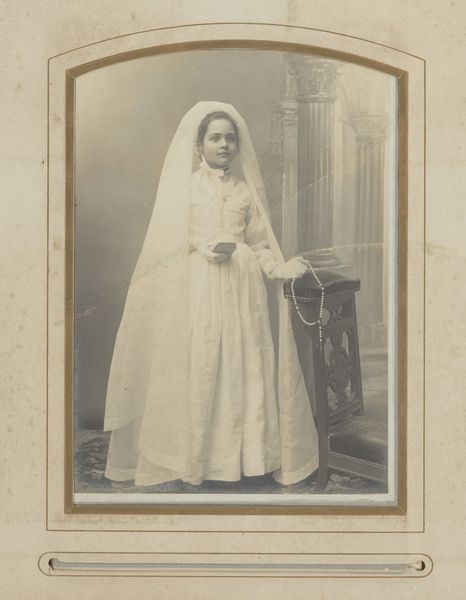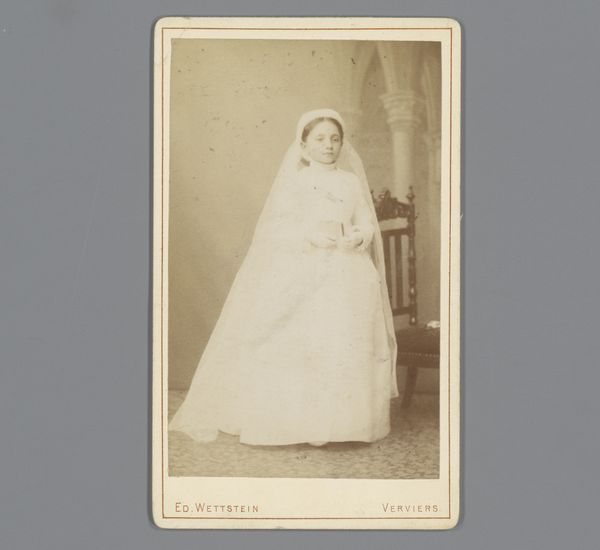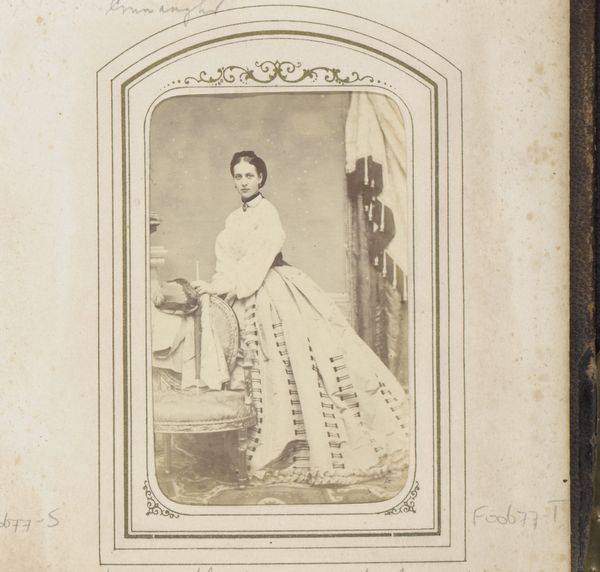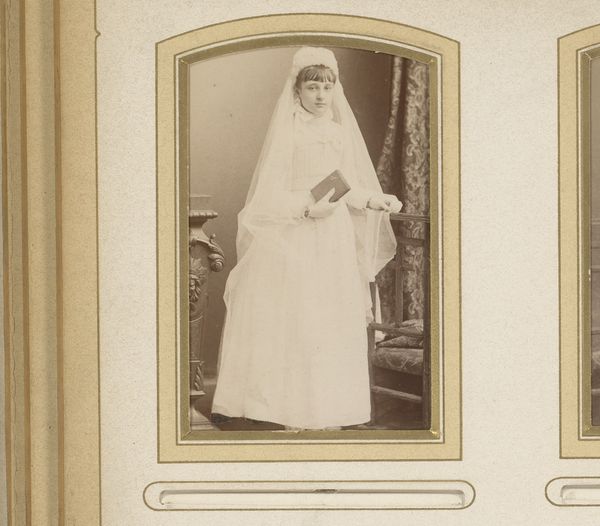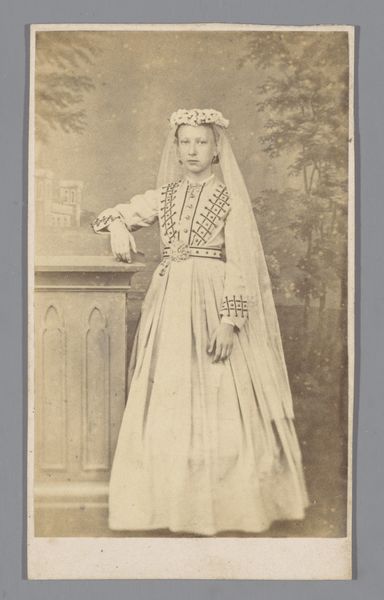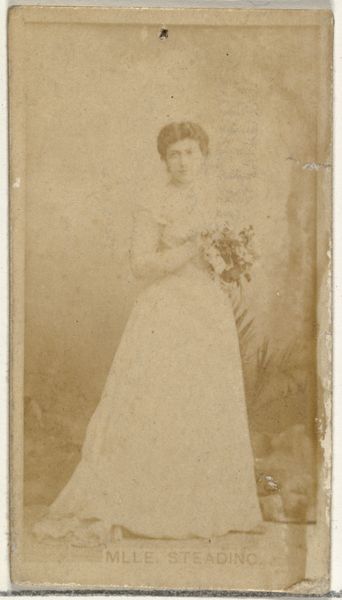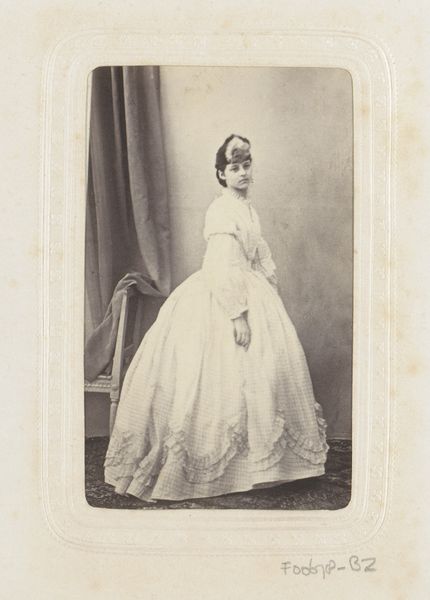
Portret van een onbekend meisje in witte jurk voor haar eerste communie 1886 - 1896
0:00
0:00
photography, albumen-print
#
portrait
#
aged paper
#
self-portrait
#
muted colour palette
#
pictorialism
#
photography
#
genre-painting
#
albumen-print
Dimensions: height 106 mm, width 64 mm
Copyright: Rijks Museum: Open Domain
Curator: Before us we have "Portret van een onbekend meisje in witte jurk voor haar eerste communie" by Louis Marie Colas, an albumen print dating from sometime between 1886 and 1896. Editor: There's such a muted palette at work here. The composition directs your eye straight to her face; it's framed perfectly by the folds of the veil, contrasting with the elaborate setting in the background. Curator: Indeed. The setting provides valuable context. This photograph documents a specific, staged, and gendered ritual within a broader Catholic framework. We might consider the ways in which innocence, purity, and religious devotion were visually encoded for young girls in the late 19th century. The formal dress, the delicate veil; it speaks volumes. Editor: It's the almost palpable stillness that strikes me. Notice the light, how it defines the form. It evokes a dreamlike atmosphere, reminiscent of pictorialism's engagement with photographic manipulation to evoke an emotional response. It’s hard to separate the passage of time that has rendered the surface uneven and altered the tonality with how deliberately subdued everything in the photograph is. Curator: Precisely, and that is why understanding the performance of identity becomes crucial here. The sitter might have had little agency in how she's being represented here. I want to dig into questions of representation and subject formation, in how the church deployed visual tools like this portrait to shape ideas about proper femininity and piety. The photograph also underscores class dynamics—a commemorative object denoting some level of family wealth. Editor: Do you think there is something to be said about how that very context, the intersection of faith and class you highlighted, affects the visual balance within the picture? How the artist deliberately framed her? To consider Colas' formal choices may tell us something new about these narratives. Curator: Yes, indeed. By bringing together form and context, we get closer to appreciating how social, religious, and artistic forces converged. Editor: I leave contemplating the photograph’s intricate interplay of shadow and light as it unveils form and feeling.
Comments
No comments
Be the first to comment and join the conversation on the ultimate creative platform.
